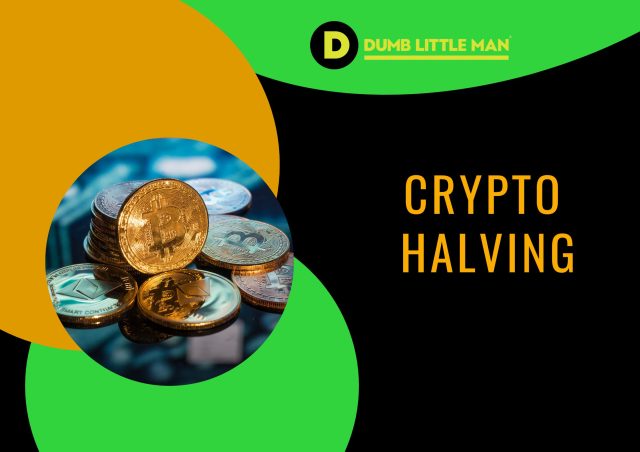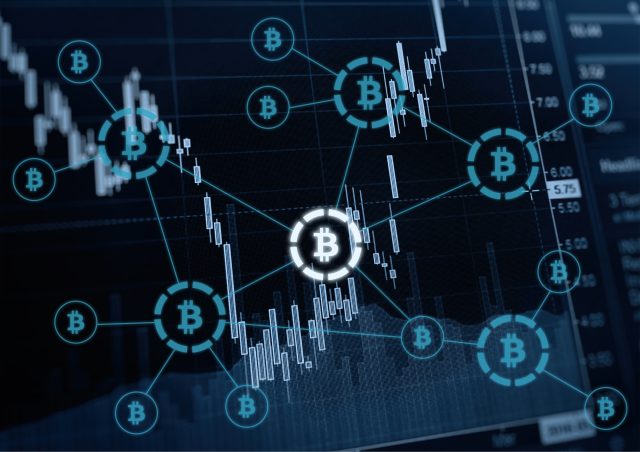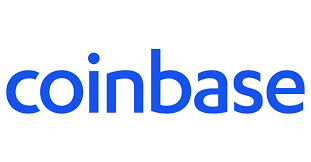Crypto Halving – Expert Insights Unveil the Secrets Behind Bitcoin’s Halving Event 2024
By Jordan Blake
January 10, 2024 • Fact checked by Dumb Little Man

Crypto halving is deeply associated with the underlying economics of any given cryptocurrency. For an altcoin or token to have value, it must have utility. That is, people must be able to use it for something. To continue our analogy from before, people must want to use it as a means of exchange or store of value. If no one wants to use it, it's worthless.
Now, on to cryptocurrency halving. When a cryptocurrency undergoes a halving event, miners' block reward for verifying transactions is cut in half. This has a direct effect on the supply of the given cryptocurrency. Because the block reward is cut in half, miners will eventually mine half as many coins as they did before the halving event. Again, this effectively halves the supply of the given cryptocurrency.
What does this mean for the price? Well, it's simple economics, and to understand the concept of bitcoin halving, we have got Ezekiel Chew, the CEO, and co-founder of Asia Forex Mentor. Not only that, but he is also a full-time professional Forex trader. With more than a decade of trading experience, he has mastered the art of Forex trading.
In this article, we will discuss bitcoin halving, the BTC network and mining process, block reward, and more. So, let's get started.
What is Crypto Halving

Crypto halving is an event that happens every four years in the cryptocurrency world. This event is important because it affects the supply and demand of cryptocurrencies and can potentially lead to price increases.
Bitcoin halving occurs when the block reward for miners is reduced in half. This happens every 210,000 blocks or roughly every four years. When the block reward is halved, miners receive less cryptocurrency for verifying transactions. This can lead to less mining activity and a higher price if the demand for the cryptocurrency remains the same.
Some people believe that because Bitcoin is digital, it can be duplicated or manufactured without limitation. However, scarcity may be verified, which is one of the fundamental ideas. When Bitcoin was created, two key ideas regarding scarcity were implemented.
The first decision was to have a fixed 21 million coins for the cryptocurrency. According to recent data, only about two million Bitcoin remain unmined. The second decision before the digital coin's launch was that the amount of new bitcoin added to the network every four years would be halved. This idea, known as halving, is what it's all about.
The last reduction occurred in 2020, when the network received 12 new Bitcoins every ten minutes. However, following the bitcoin halving, the amount was reduced to six Bitcoins. The next halving is anticipated to occur in 2024 when the number is reduced to three. Every four years, with a forecast end date of 2140 for when the first number of 21 million coins will be delivered, this rate will persist at this pace.
What is Bitcoin Network

It's critical to have a firm grasp on the mechanism behind Bitcoin's network before diving deeper into the idea of Bitcoin halving.
The blockchain, a widely known decentralized ledger, is the underlying technology behind cryptocurrencies. It's an accumulation of nodes that keep the software running and collect transaction data as it occurs.
The genesis block is the first Bitcoin record and serves as a basis for transaction rejections and approvals.
To validate a transaction, the computer running the software must complete a series of checks to ensure its validity. First, ensure that the transaction stays within the correct parameters and is sufficiently long. Then, the transaction is verified on its own.
When a block's transactions are all approved, the chain is clogged. This occurs when every transaction in a block is accepted. That transaction is then added to the current blockchain and broadcast to the other computers in the network after approval.
By having additional computers on the blockchain, network stability will improve. The key takeaway is that everyone is invited to join the BTC network as long as they have a computer that supports blockchain technology.
Bitcoin Mining Process

Bitcoin mining is a popular term, but most people don’t understand it. Don't be fooled by “mining” — no physical digging for metals is involved. Rather, Bitcoin miners work on resolving mathematical equations and verifying the legitimacy of transactions.
Miners engage with the blockchain network that supports Bitcoin by using their personal computers to solve complex mathematical problems called blocks. They are also responsible for validating transactions and functioning as a processor and adjudicator. In the case of Bitcoins, there is a mechanism known as proof of work.
The goal is for miners to prove that they've completed their part in the procedure and are entitled to rewards. Miners don't simply invest in their computers; they also spend money on electricity, which a computer requires to mine Bitcoin. Time is another investment that must not be overlooked.
Block Reward
Two hundred ten thousand blocks are mined every four years on average. As part of the transaction processing, miners receive a block reward which is halved after every 210,000 blocks (i.e., every four years). This is done to create price inflation and will continue until all bitcoins have been released.
Unlike the old system where miners were paid in newly generated Bitin the futureforward, they will receive compensation from transaction fees collected by the network for processing transactions. This incentivizes miners to stay active and keep the network running smoothly.
The halving is essential since it signifies another round of Bitcoin supply reduction. Every new block was rewarded with 50 Bitcoins under the previous award system.
The first halving event sliced the figure in half, reducing it to 25, and the second cut it back down to 12. The last halving reduced the total number of Bitcoins in circulation from 21 million to 6 million. The idea behind halving is to create scarcity and raise prices. And as previously said, the halving events will continue till 2140.
How is the Bitcoin Network affected by Halving

The consequence for every involved party in the Bitcoin protocol when fewer bitcoins enter circulation is a result of the bitcoin halving. The investors and miners are both more vulnerable.
It's easier to see how the workings of the Bitcoin system are complex, not just from a technical standpoint but also from a market perspective. The demand for Bitcoins will increase due to a decreased supply, pushing the price.
Fewer rewards for miners mean that many will have to leave the ecosystem. This is because they cannot compete with bigger organizations that can stay and receive smaller compensation. When the price of bitcoin rises, the number of miners declines. In contrast, if the situation changes in the other direction, the opposite is true.
When halving happens and the miners leave due to increased prices, the network becomes more vulnerable to attacks. This, in turn, reduces its security. Because demand generally increases after supply decreases (due to halving), investors tend to get excited about it. They believe that prices will rise as a result of lessened miner numbers. Consequently, trading activity around cryptocurrency significantly speeds up just before halving occurs.
Why Halving Occurs every Four years
The Bitcoin mining algorithm is programmed to locate new blocks every ten minutes. However, when more miners join the network, they add processing power, reducing the time needed to identify blocks.
The solution for this problem is to adjust the mining difficulty, which is done every two weeks to realign the goal set in ten minutes. The network continues to expand, but the typical time needed to find a block is ten minutes.
There's a theory as to why Bitcoin halving was implemented. The proposed notion was to entice more people to join the network by allocating the most coins in the project's beginning stages. Encouraging more individuals to become miners and creating a trend will help boost the asset's popularity.
The Importance of Bitcoin Halving

Bitcoin halving is significant because it cuts in half the number of new bitcoins mined with each block. This has caused speculation that the event could lead to a surge in the price of BTC.
The last two halvings have resulted in price increases, with the asset reaching all-time highs in the months following each event. While it's impossible to predict the future, many believe that the next bitcoin halving could have a similar effect on the price of BTC. Investors typically view bitcoin halvings as a way to get exposure to Bitcoin without buying the asset directly. This is because price increases have historically followed the events.
If there is an overwhelming demand for Bitcoin, the rate of new Bitcoins being generated will decrease, making it more likely for the value to rise. This is in stark contrast to fiat currencies, which typically lose value due to inflation over time. At the same time, the price of Bitcoin will continue to rise. When halving occurred, block rewards decreased significantly.
This is one of the reasons why some soda drinks were priced at a dime half a century ago. Bitcoin's protocol employs halving to keep the currency stable by creating scarcity. This is an important consideration for investors who want to preserve value.
Best Crypto and Forex Trading Course

Ezekiel Chew is a well-known figure in the Forex trading world. He is a highly successful Forex trader and trainer who has taught people how to trade for many years. Ezekiel is the founder of Asia Forex Mentor, where he teaches people from all walks of life how to trade Forex successfully. His programs are designed to take people from beginner to advanced and cover everything.
In addition, Ezekiel is a highly sought-after speaker and trainer and has been featured in many Forex trading publications. Chew's trading methods are based on sound mathematical probability and have been proven successful by many of his students. Many of his students have gone on to become highly successful traders themselves.
Ezekiel is also very passionate about giving back to the community, so if you are looking forward to taking a Forex trading course, one core program would be a great choice. With Ezekiel's guidance, you will be able to learn how to trade Forex successfully and make money from the markets. Sign up Now!
| RECOMMENDED TRADING COURSE | REVIEW | VISIT |
|---|---|---|
 | #1 Forex, Crypto and Stocks trading course. Ranked most comprehensive by Investopedia and Best by Benzinga. Free to Try! |  |
Best Crypto Brokers
| Broker | Best For | More Details |
|---|---|---|
 | Earning Rewards Read Review | securely through Coinbase website |
 | Altcoin Trading Read Review | securely through Binance website |
 | Sign Up Bonuses | securely through Crypto.com website |
 | New Investors Read Review | securely through Gemini website |
Conclusion: Crypto Halving
Every four years, cryptocurrency miners experience halving- a process that cuts the production of new Bitcoins in half. So naturally, this affects how Bitcoin is traded, and investors need to understand how price inflation works.
This process will continue until it reaches its final stage in 2140. By then, bitcoin miners will have earned 21 million Bitcoins. At that point, rather than being compensated with new Bitcoins, they will be charging transaction fees instead. Bitcoin halvings occur every four years, and they have been hyped up since the first bitcoin halving in 2012. Investors need to consider the bitcoin halving event because it helps control the supply of Bitcoin and stabilize the digital currency.
The halving will significantly alter the BTC network. Investors will see a price rise in the weeks before and after the halving. Miners are divided due to the bitcoin halving; some network members remain within the ecosystem, while others leave. So, although there may be a short-term price increase, the long-term effects of halving are still unknown.
Crypto Halving FAQs
Will BTC drop after Halving?
It is unlikely that BTC will drop after the halving as an increase has generally followed the event in price.
Does Ethereum have a Halving?
Ethereum does not have a halving or a maximum total number like other cryptocurrencies. Instead, it caps the quantity that gets released annually.
What date is the Next Bitcoin Halving?
The last bitcoin was done on 11 May 2020 at around 3 pm, and the next bitcoin halving is scheduled on May 2024.
Jordan Blake
Jordan Blake is a cultural commentator and trending news writer with a flair for connecting viral moments to the bigger social picture. With a background in journalism and media studies, Jordan writes timely, thought-provoking content on everything from internet challenges and influencer scandals to viral activism and Gen Z trends. His tone is witty, observant, and sharp—cutting through the noise to bring readers the “why” behind the “what.” Jordan’s stories often go deeper than headlines, drawing links to pop culture, identity, and digital behavior. He’s contributed to online media hubs and social commentary blogs and occasionally moderates online panels on media literacy. When he’s not chasing the next big trend, Jordan is probably making memes or deep-diving into Reddit threads. He believes today’s trends are tomorrow’s cultural history—and loves helping readers make sense of it all.













